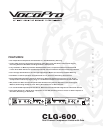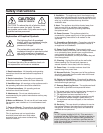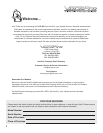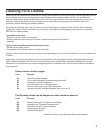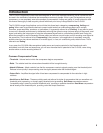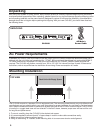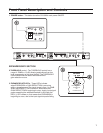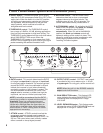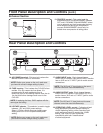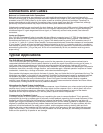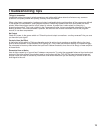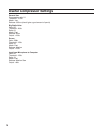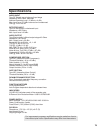
12
Broadcasting
Compression has long been used as a tool to make an audio signal appear louder. A good example is in
broadcasting, where competing stations with identical transmitters and power attempt to sound louder than each
other. Since they are all restricted with respect to maximum audio level (modulation), their best tactic is to
squeeze the dynamic range of their programs to just a few dB. The audio output level of the station virtually never
changes, and the listener perceives this continuous high-level sound as being louder than the same material in an
uncompressed form. Although both compressed and uncompressed programs reach the same peak levels, the
compressed signal stays near peak level more of the time, and thus sounds louder. This technique makes the
broadcast more intelligible over the road noise in your car, and increases the geographical area over which the
broadcast is audible to the listener. A similar, if less pronounced, effect can be used in sound reinforcement and
recording applications.
Typical Applications (cont.)
SPECIAL EFFECTS
Altering the Texture of Musical Instruments
It would be impossible to mention here all the ways that compression is used to create new sounds with familiar
instruments. Some typical uses are:
1. Creating a "fatter" kick drum or snare sound.
2. "Thickening" acoustic guitars.
3. Adding punch and sustain to electric bass or guitar.
In general, use a gentle compression ratio, say 4:1, with a 10 mS attack time, 0.1 sec. release time, and a
low enough threshold to cause 6 to 10dB of gain reduction. Try using this effect to help bring out a lead
vocal or instrumental solo in a cluttered mix. The compressor is also a great corrective tool when working with
singers whose own dynamic control is less than perfect. A little compression helps to keep their quieter lines
from becoming buried in the mix. Experimentation is highly recommended.
Voice-Over Compression ("Ducking")
The CLG-600 units can be used to automatically reduce music to a background level when an announcer is
speaking. In this scheme, only the music signal is actually gain-reduced by the limiter. However, the detector is
connected to respond to an announcer's voice instead of the music's peaks. Voice-Over compression assumes
you are already using some sort of mixer to combine the music and mic signals. Use the direct out (send) of the
mic channel to feed the detector input on the CLG-600 unit. Note: Be sure to use a mono plug for the CLG-600
Gain Riding
One solution to the noise vs. distortion trade-off is to keep your hand on the level control and manually adjust gain
to suit the program. Indeed, there are times when this approach is entirely satisfactory. However, in most types of
music there are instantaneous, short duration volume peaks, or transients, which would be difficult to anticipate
and impossible to respond to with manual gain riding, you simply could not bring the level down fast enough. In
many situations, this can present real problems. For example, in recording, an extra burst of enthusiasm from a
lead singer might overload the capabilities of your recording tape, causing ragged distortion and necessitating
another take. In sound reinforcement, a sudden burst of energy through the system can blow fuses or even
damage loudspeakers. In addition to the problem of response time with manual gain riding, it also requires your
constant attention, which takes you away from more important jobs. The need for a fast-acting, reliable, automatic
gain control is answered by limiters and compressors.
Note: Be sure to use a mono plug for the CLG-600 detector input. Then use the threshold
and ratio controls to determine when and by how much the announcer's voice affects the
music level.



